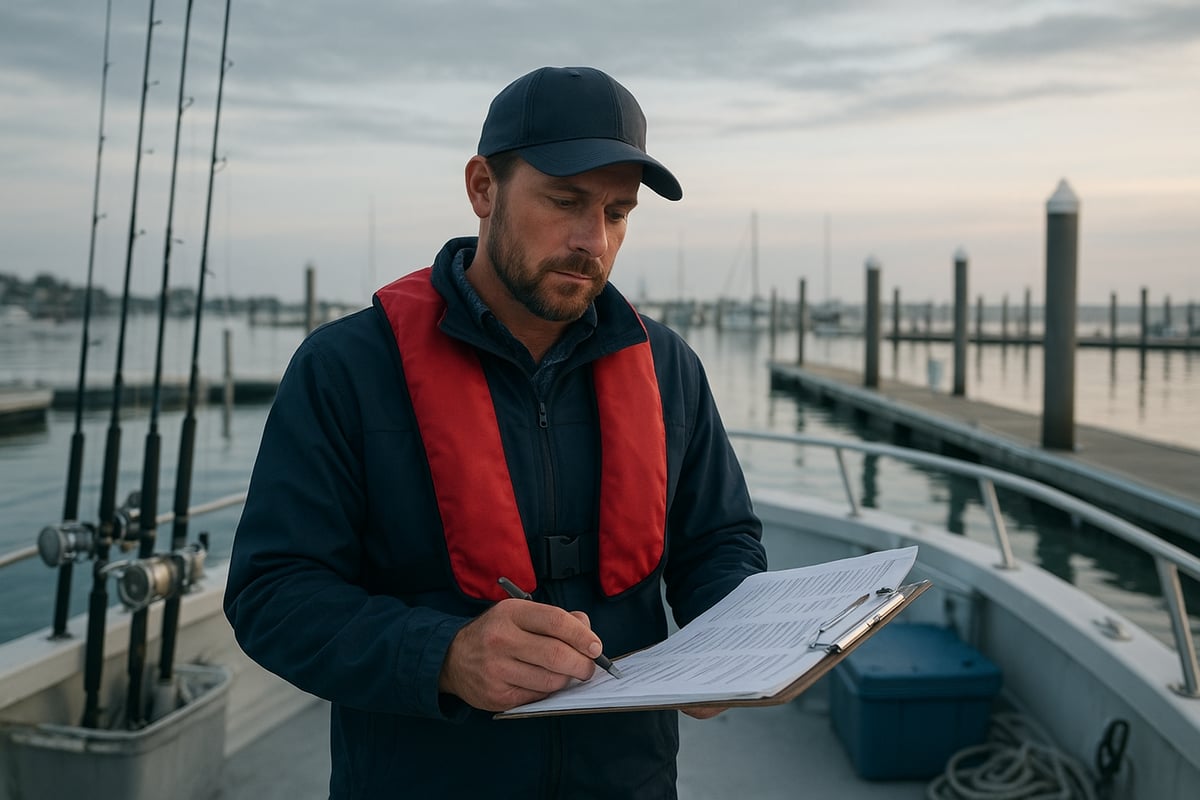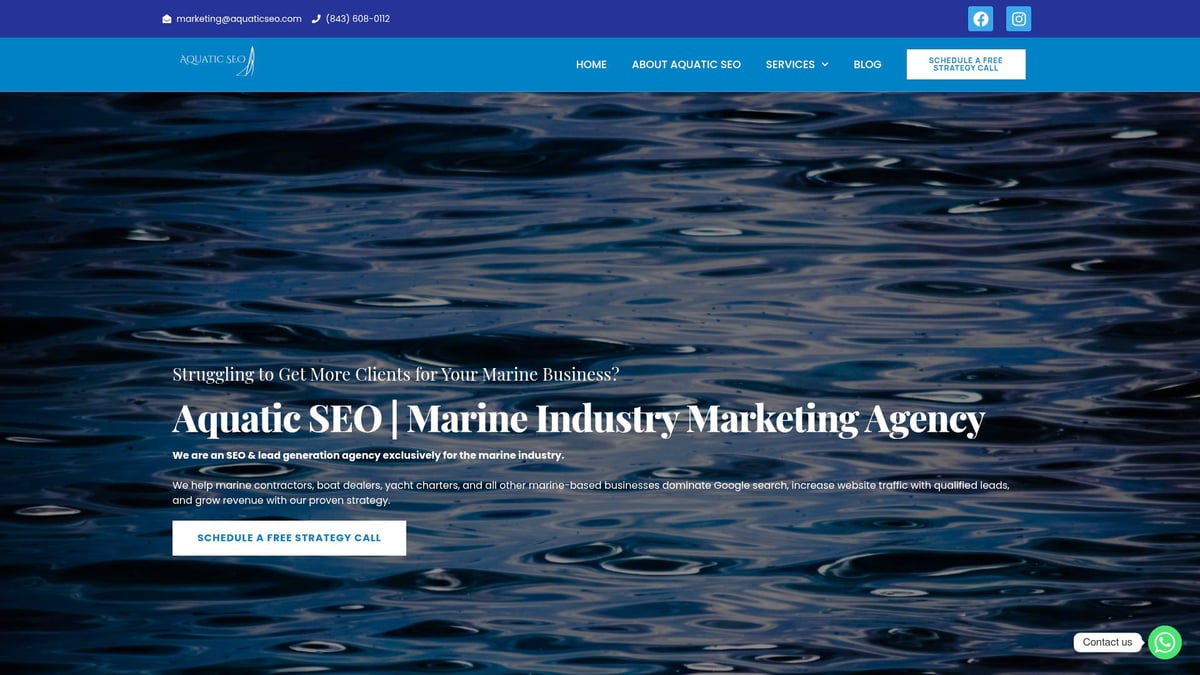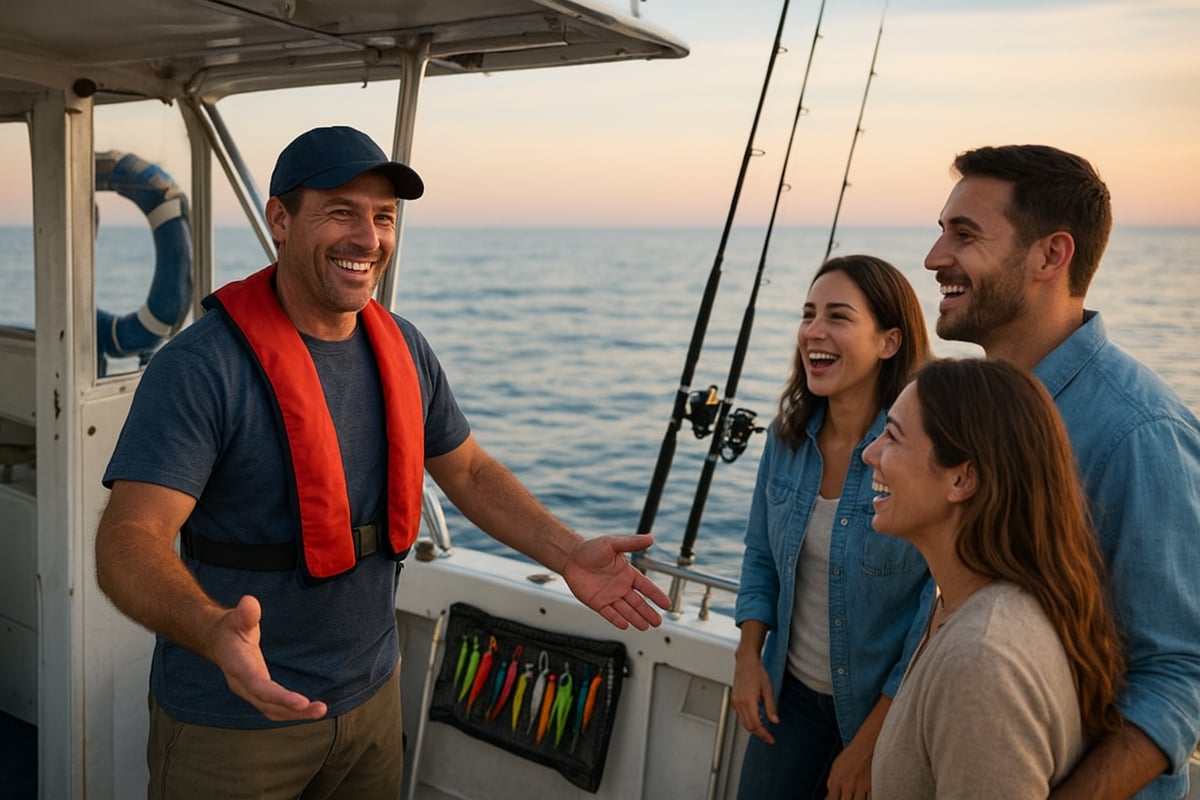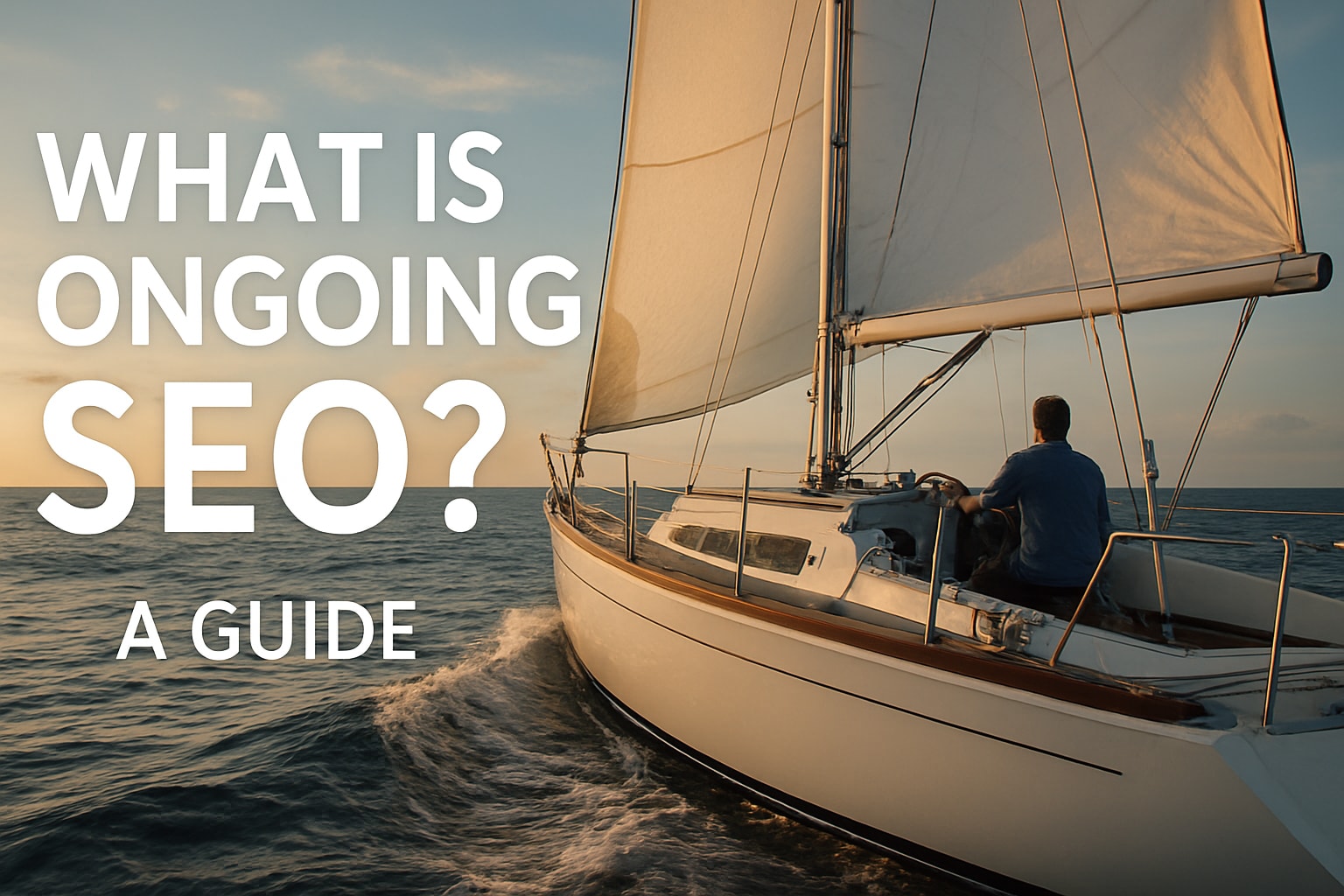Thinking about starting your own fishing charter business? You’re in good company. The coming year is set to be a record-breaker for ambitious marine entrepreneurs, with more travelers seeking unique on-the-water experiences than ever before.
This essential guide is crafted for those ready to turn their passion into a profitable venture. We’ll break down every step, from licensing and outfitting your boat to building a standout brand and scaling for long-term success.
Demand for charters is booming. Stories of rapid growth are everywhere. Ready for your roadmap? Let’s dive in and make your dream a reality.
Understanding the Fishing Charter Industry in 2025
The fishing charter business is evolving fast, and 2025 is already shaping up to be a pivotal year. Industry growth is being driven by new traveler trends, shifting regulations, and innovative tech. Let’s break down the landscape so you can see where real opportunities—and challenges—lie.

Market Overview and Growth Trends
The fishing charter business is experiencing robust demand as travelers prioritize experience-based adventures. Post-pandemic, bookings have surged, with major coastal regions reporting a 15 percent year-over-year increase. Popular destinations like Florida, Alaska, and the Carolinas are thriving, while emerging markets in the Pacific Northwest and Gulf Coast are attracting new operators.
Sustainable fishing and eco-tourism initiatives are also influencing growth, drawing environmentally conscious customers. According to the Fishing Boat Charter Industry Report, the sector’s revenue and participation rates are projected to climb steadily through 2025. If you’re considering a fishing charter business, the timing couldn’t be better.
Types of Fishing Charters and Target Audiences
In 2025, the fishing charter business offers a diverse range of services. Deep sea, inshore, and freshwater charters remain staples, but specialty trips—like sailfish-only runs or eco-tours—are capturing new markets. Families, seasoned anglers, corporate teams, and adventure-seeking tourists all book trips, each with unique preferences.
Seasonality and regional differences play a big role. For example, summer months in the Northeast see spikes in striped bass charters, while winter in the Gulf brings in redfish seekers. Niche operators who tailor experiences to these trends often carve out a loyal client base and stand out in the fishing charter business.
Key Challenges and Opportunities
Running a fishing charter business in 2025 comes with rising costs—fuel, maintenance, and insurance are all up. Regulatory requirements have grown more complex, with updated licensing and safety standards. Staying compliant can be a hurdle for new captains.
Yet, digital booking platforms and targeted social media marketing are opening doors. One competitor saw trips jump from 20 to over 300 annually by leveraging online booking and smart digital outreach. For those ready to adapt, the fishing charter business still offers significant upside.
Essential Skills and Mindset for Success
Success in the fishing charter business isn’t just about knowing where the fish are. It’s about resilience, adaptability, and delivering top-notch customer service. Seasoned captains will tell you: no two days are ever the same, and flexibility is key.
Business skills matter as much as passion. Managing bookings, handling reviews, and building a strong reputation are vital. In 2025, reputation management can make or break your fishing charter business—clients talk, and their stories travel fast online.
Step-by-Step Guide to Setting Up Your Fishing Charter Business
Launching a fishing charter business in 2025 is more than just owning a boat and loving the water. It’s a process—one that requires planning, legal know-how, and a focus on customer experience. Let’s break down each step so you’re ready to turn your vision into a thriving business.

Step 1: Legal Requirements and Licensing
Every successful fishing charter business starts with a solid legal foundation. Begin by researching federal, state, and local licensing. In the U.S., you’ll need a USCG captain’s license—this requires sea time, passing a test, and a background check.
Don’t forget drug testing, CPR certification, and a Transportation Worker Identification Credential (TWIC) card. The right insurance—liability, vessel coverage, and passenger protection—is a must. Many new owners use a checklist to stay organized. For a deeper dive, check out this How to Start a Fishing Charter Business guide for step-by-step legal insights.
Step 2: Choosing and Outfitting Your Boat
Your boat is the heart of your fishing charter business. Size, reliability, and comfort matter—think about your target trips and customer experience. Some start by retrofitting a family vessel, while others invest in a purpose-built charter boat.
Outfitting means more than rods and reels. Invest in GPS, sonar, VHF radios, and U.S. Coast Guard-approved safety gear. A well-equipped vessel boosts client confidence and safety. Many successful operators share stories about upgrading their first boat to meet growing demand, making smart choices from the start.
Step 3: Building Your Business Infrastructure
Treat your fishing charter business like any serious company. Set up an LLC or S-corp to protect your assets. Choose accounting software that fits marine businesses and stay current on taxes and compliance.
A digital booking platform is essential. Clients want easy online reservations, split trip options, and secure payment processing. Even a simple website can attract bookings and build trust. One captain saw a surge in trips after adding split trip options and online payments, proving infrastructure is more than paperwork—it’s your growth engine.
Step 4: Pricing, Packages, and Profitability
Profitability is key for any fishing charter business. Start by calculating your fixed and variable costs: fuel, maintenance, permits, insurance, and crew. Use these numbers to set competitive, profitable rates.
Offer packages—half-day, full-day, or specialty trips—to attract different customers. Managing overhead and maximizing off-peak bookings can turn slow days into steady revenue. Study your local competition to refine your pricing. Smart operators adjust packages seasonally to meet demand and boost margins.
Step 5: Staffing, Training, and Crew Management
As your fishing charter business grows, you’ll need help. Decide when to hire a mate or an additional captain. Training is critical—focus on customer service, safety, and emergency response.
Crew compensation varies: some pay salary, others offer commission or profit sharing. As you scale, clear roles and fair pay keep your team motivated. One operator went from solo trips to a multi-boat crew by investing in training and building a strong culture.
Step 6: Developing Operations and Maintenance Protocols
Smooth operations are the backbone of a great fishing charter business. Create preventative maintenance checklists for your vessel and gear. Schedule regular safety drills and keep compliance logs up to date.
Be ready for emergencies—have clear protocols for medical incidents, breakdowns, or customer issues. Captains often learn from early mistakes, like missing a maintenance step that led to lost trips. Consistent routines not only prevent problems, they build your reputation for safety and reliability.
Building Your Brand and Attracting Customers
First impressions set the tone for any fishing charter business. In such a competitive market, your brand is more than just a logo; it’s the promise you make to every guest who steps aboard. From your business name to your digital presence, each detail shapes how customers see and remember you.
Creating a Standout Brand Identity
Your brand identity is the heartbeat of your fishing charter business. Start with a name that’s memorable and easy to spell, then design a logo that looks sharp both on a website and the side of your boat. Consistency is key—use the same colors, fonts, and messaging across all touchpoints.
- Choose a name that reflects your local waters or unique offering.
- Invest in a professional logo and cohesive visual style.
- Develop a tagline or unique selling proposition that captures your promise.
A strong brand builds trust. Look at top charters in your area—they all have a distinct look and voice. In today’s market, customers often choose a fishing charter business based on first impressions alone.
Digital Marketing Essentials for 2025
If you want your fishing charter business to thrive, digital marketing isn’t optional. A high-converting website with online booking is your 24/7 storefront. Focus on SEO, targeting keywords like “fishing charter business near me,” and make sure your site loads fast on mobile.
- Use clear calls to action for booking
- Add real-time availability calendars
- Highlight customer reviews front and center
For step-by-step optimization tips, check out the Local SEO for Marine Businesses Guide. With 70% of customers booking online, a strong digital presence can make or break your fishing charter business.
Social Media, Content, and Community Engagement
Social media is where a fishing charter business can really shine. Instagram and TikTok are perfect for sharing big catches and happy customers in real time, while Facebook groups help you connect with local anglers.
- Post daily or weekly fishing reports
- Share customer stories and testimonials
- Run contests to encourage photo tagging and sharing
Engaging content turns casual followers into loyal clients. Plus, participating in community events and local fishing forums can boost your fishing charter business’s reputation and fill last-minute spots.
Leveraging Booking Platforms and Partnerships
Modern booking engines are a must for any fishing charter business. Integrate platforms like FareHarbor or FishingBooker directly with your website to capture more bookings and manage your calendar with ease.
- Partner with hotels and marinas for referral deals
- List your charter on popular travel and tourism sites
- Offer affiliate incentives to local businesses
Industry data shows that most new customers discover a fishing charter business online. Building strong partnerships expands your reach and keeps your boats full, even during shoulder seasons.
Reputation Management and Customer Experience
Your online reputation can make or break a fishing charter business. Proactively manage reviews on Google, TripAdvisor, and niche platforms. Respond quickly and professionally to both praise and criticism.
- Encourage guests to leave honest feedback
- Resolve issues promptly and follow up personally
- Share positive reviews on your website and social channels
A stellar reputation attracts new clients and encourages repeat business. One captain grew his fishing charter business to over 100 glowing reviews with very few negatives—proof that customer experience pays off.
Marine SEO & Digital Growth Strategies for Charter Businesses
To truly dominate your local market, specialized marine SEO is essential for any fishing charter business. Investing in targeted PPC, content marketing, and conversion optimization consistently drives more bookings.

For example, one charter company increased bookings by 63% in a single year with a comprehensive digital strategy. Aquatic SEO’s Blended Customer Generation Strategy brings measurable, year-round growth—helping your fishing charter business outperform the competition. In 2025, transparent and trackable marketing is non-negotiable for any ambitious marine business.
Mastering Customer Service and Delivering Exceptional Experiences
Exceptional customer service is the heart of every thriving fishing charter business. In a crowded market, it is not just about taking guests fishing—it is about creating memorable, seamless experiences that keep them coming back. Let us break down how to set the standard for service and deliver the kind of trips clients rave about.

Setting Expectations and Communication
Clear, proactive communication sets a professional tone for your fishing charter business. Before each trip, send detailed emails or SMS updates covering what to bring, weather forecasts, and meeting times. This helps guests feel prepared and valued.
Set realistic expectations about catch possibilities, seasonal species, and weather conditions. Outline your policies on cancellations and weather delays in writing, so there are no surprises. Many operators use automated reminders to reduce no-shows and boost satisfaction.
A handy checklist for pre-trip communication might include:
- What to wear and bring
- Safety and emergency contacts
- Catch limits and local regulations
Getting these basics right shows your fishing charter business values transparency and reliability.
Onboard Experience and Safety
From the first handshake at the dock, focus on making guests feel welcome and safe. Start every trip with a clear safety briefing, even for repeat clients. Demonstrate life jacket use and point out emergency equipment locations.
For beginners, offer hands-on instruction—showing how to handle rods, bait hooks, and reel in fish. Blend education with entertainment to keep everyone engaged.
Great captains know how to read the room, balancing teaching with laughter. That personal touch is what turns a first-time guest into a loyal fan of your fishing charter business.
Handling Challenges and Difficult Customers
Every fishing charter business faces tough days—flat bites, rough seas, or challenging personalities. Stay calm and solution-focused when things get rocky. Have seasickness remedies and alternative activities ready in case the fish are not biting.
Listen actively to complaints and respond with empathy. Sometimes, offering a partial refund or a discount on a future trip can turn a negative into a positive review.
For additional strategies, check out the Key Success Factors for Charter Fishing Businesses, which outlines proven ways to navigate tricky situations and maintain a strong reputation.
Building Loyalty and Encouraging Referrals
Loyalty is built on the little things your fishing charter business does after the trip. Send personalized thank-you notes or follow-up emails with photos from the day. A simple loyalty program—like discounts for repeat bookings—goes a long way.
Encourage happy customers to share their experiences online. Feature their photos and stories on your website and social channels. This not only boosts your credibility but also attracts new clients through word-of-mouth.
A well-managed referral program can quickly multiply your bookings and establish your fishing charter business as the go-to choice in your region.
Scaling and Future-Proofing Your Fishing Charter Business
Scaling a fishing charter business is about more than adding boats. It is a strategic process that ensures long-term growth, adaptability, and a lasting reputation in the marine industry. Let us explore the essential steps to future-proof your operation and stay ahead of the competition.
Expanding Your Fleet and Services
Expanding a fishing charter business starts with evaluating demand and your operational strengths. When bookings consistently max out, it is time to consider adding another vessel or hiring more crew. Many successful operators branch into new trip types, like eco-tours or specialty fishing adventures, to diversify revenue.
Here is a quick checklist for expansion:
- Assess booking trends and customer feedback
- Evaluate vessel maintenance and staffing capacity
- Research opportunities for corporate events or merchandise sales
Growth is not just about scale, but smart strategy. Effective lead generation is key, which is why many owners leverage resources like Lead Generation for Marine Industry Businesses to attract new customers and partnerships.
Adapting to Industry Changes and Tech Advances
The fishing charter business is evolving rapidly, especially as new regulations and technology reshape the industry. Staying compliant with local and federal laws is non-negotiable, and eco-friendly practices are now a major selling point for many clients.
Embrace tech upgrades like digital booking apps, onboard Wi-Fi, and electronic logbooks to streamline operations and delight your guests. According to the Fishing Charter Market Research Report 2033, a significant portion of customers now prefer charters that use sustainable practices and digital conveniences.
By adopting these changes early, your fishing charter business will stand out as a leader in innovation and customer care.
Financial Management and Sustainable Growth
Managing the finances of a fishing charter business requires discipline and forward planning. Track your bookings, customer acquisition costs, and lifetime value to make informed decisions. Reinvest profits wisely, and avoid excessive debt, especially when expanding your fleet.
Seasonality can impact cash flow, so plan for off-peak months with creative packages or alternative revenue streams. Many operators survive economic downturns by monitoring key performance indicators and adjusting their business models quickly.
Solid financial management is the backbone of a resilient fishing charter business that can weather any storm.
Networking, Mentorship, and Continuous Learning
No fishing charter business grows in isolation. Networking with other captains, joining professional organizations, and seeking mentorship can open doors to valuable partnerships and industry insights.
Attend trade shows, workshops, and online courses to stay current on the latest trends and regulations. Local associations often provide resources and support that are invaluable during challenging times or industry shifts.
Continuous learning and strong relationships are what keep a fishing charter business agile, relevant, and ready for whatever the future brings.
If you’re serious about launching your fishing charter business in 2025 and want to set yourself up for consistent bookings and long term growth, it pays to have a tailored strategy built by marine industry experts. We’ve walked through everything from licensing and outfitting to digital marketing and customer experience, but every business is unique. Let’s make sure you have the right foundation and a plan that fits your goals. If you’re ready to take the next step and see how you can dominate your local market, Schedule a Free Strategy Call with our team of marine marketing professionals today.





